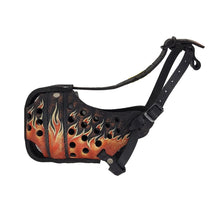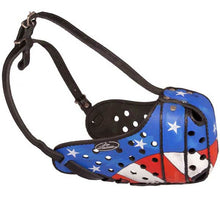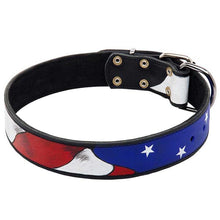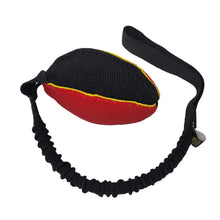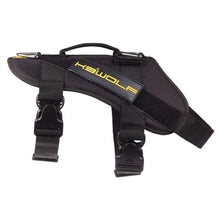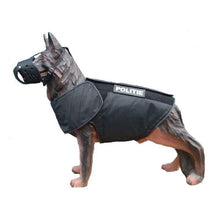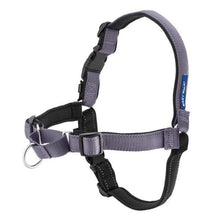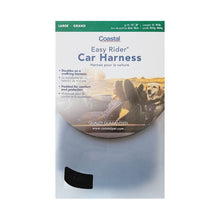5 Things You Shouldn't Let Your Dog Do

1: Walk in front of you during walks.
There are a lot of myths surrounding this one such as "If you let your dog walk in front of you, it means your dog is above you and showing dominance." That explanation is a bit of a stretch. There is a lot of stretching in the logic of that talking point. Realistically the problem is more based on inadvertently teaching your dog to pull and drag you around.
There are plenty of times when it is perfectly okay for your dog to walk in front. The two main reasons I can think of are to sniff around to relieve themselves, and when doing tracking of any kind. The issues seem to start when a normal walk for exercise turns into a dog that is leading its owner and taking its owner for a walk. Soon they start to pick the direction themselves and will pull so you get the memo that you're going the wrong way.

Your dog should walk beside you with a slack leash when walking for exercise and should only be out in front of you when using the restroom, tracking, or when you're just having a lazy, fun walk and don't mind if your dog does some exploring. The best way to eliminate the possibility of confusing your dog is by teaching a release word. If I'm going from a walk where I expect my dog to walk next to me and switch to a walk where they're expected to relieve themselves or are free to play around; I tell them "free." They know that means they're allowed to break their heel and go explore or use the restroom.
2: Free feed.
This is another controversial topic where people may not see eye to eye. But before an argument in the comments starts, answer one question, is free feeding necessary for a dog to live? Unless there's some rare disorder or disease, the answer is no.

Now that that is established, what are the pros to free feeding? There's only one I find legitimate and that is "It's easier to fill up a large bowl every morning than to feed 2-3 meals a day." That's not bad logic, honestly. And if that works for you, that's fine. The problems start when dogs start getting overweight, and most dogs who are free fed will get to that point one day, especially with age.
When people see thin dogs, they are appalled. But when they see overweight dogs, they say it's all muscle or that it's just a big-boned dog. The latest study on longevity in dogs had a group of dogs that were considered slightly underweight by veterinarians, and a group that was average weight according to veterinarians, and one group that was considered slightly overweight. The slightly underweight dogs lived nearly two years longer than the overweight group did on average. Even more surprisingly... the slightly underweight dogs lived nearly 10 months longer than the group of dogs that were of average weight. Thin dogs live longer and more importantly, have more years of a higher quality of life.

3: Don't let your dog walk in or out of the house before you do.
This is one we've all seen before. The problem is most of us are familiar with it. Outdated training information based on the flawed "alpha theory." This theory was that if you didn't make sure you were first in and out, the dog was the "alpha" and it was only a matter of time before your dog tried to exert dominance over you.
First off, most dogs don't have much dominance in them. And that's a good thing for most dog owners. A truly dominant dog who will hurt you for doing things it doesn't like or starts fights by domineering over other dogs until it comes across one who doesn't tolerate their behavior isn't a dog most people want. And out of the people who want a dog like that, even fewer can handle a dog like that.

So if most dogs aren't a problem when it comes to that kind of behavior, why should you be first coming in and out? It's simple... you want to control the door space in your home. Any and everybody who has ever had a dog bolt out of the door the second it was open and take off outside knows how important it is to control the door space. Anyone who has nearly been run over going in and out of the house knows that importance as well.
This isn't about being alpha, this is about boundaries and respecting those boundaries to keep you and your dog safe. If your dog bolts outside, it can get hurt. If your dog trips you up, you can get hurt. If your dog trips you up and you fall on it, you can both get hurt. Teaching a dog to respect the fact that it needs to be patient in the door space isn't a show of dominance and force. It's teaching boundaries and respect for the safety of both parties.

4: Don't let your dog greet you excitedly.
I'll keep this one short and simple. Excited dogs bark, might accidentally run you over, and tend to jump up. Most people don't want these things to happen to them or guests who come over. To stop that behavior, come home with calm energy and don't let your dog exhibit those behaviors. I cannot count how many times people have asked for help with these issues, but when I observe them, they come in the door talking in baby talk and bouncing around excitedly. If you don't want your dog to reciprocate that level of intensity, don't walk through the door with it.
5: Don't feed table scraps.
Many human table scraps are fine to feed to your dog. They can add complexity, flavor, and added nutrition to their diet. But what you shouldn't do is feed your dog table scraps directly from the table. Doing so is teaching your dog to beg when people are eating. If you don't mind this, then it doesn't matter. Unless you have one of those very rare, truly dominant dogs that we mentioned earlier. Some of those dogs will bully you and especially your guests into feeding them.

Notice that many of these things are preferences. If you don't mind your dog jumping up on you, rushing the door, begging, pulling, etc., you don't have to follow these rules and set these boundaries. But the behaviors discussed in this article are behaviors that I would say the majority of people find undesirable. Luckily, most of these behaviors are pretty easy to prevent and/or stop within just a few days with a minimal amount of work.
We hope you enjoyed this article and learned a little about how some of these "don'ts" have been misunderstood in years past even though they are still relevant today in dog training. If you have the time, we would very much appreciate it if you'd leave a like and a share. Thank you.
You might also like: 5 Things You Should Never Do To Your Dog



